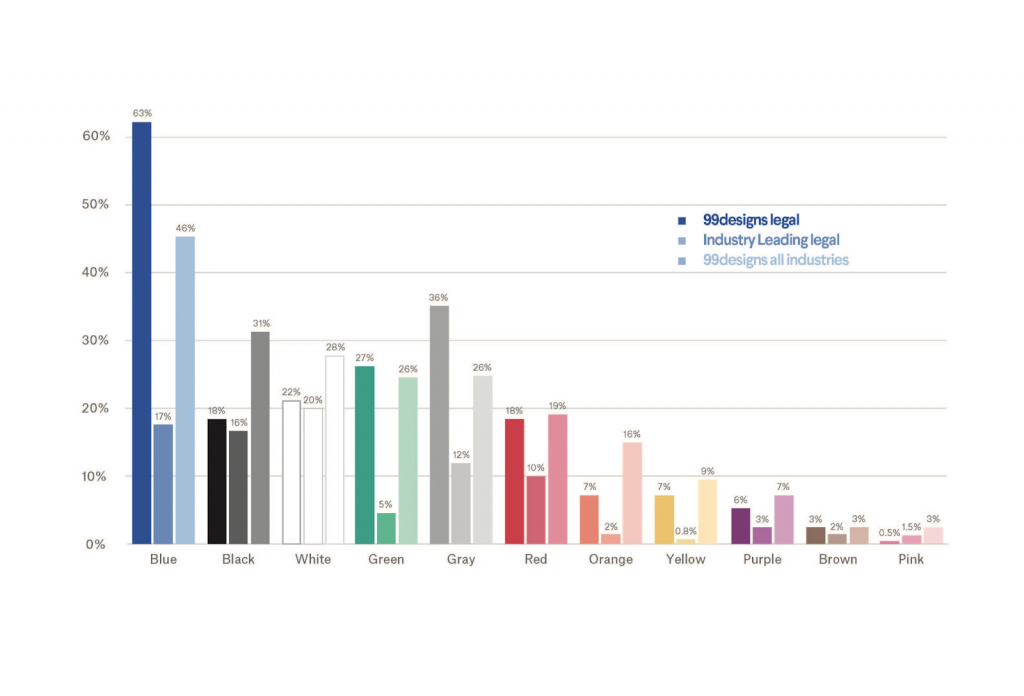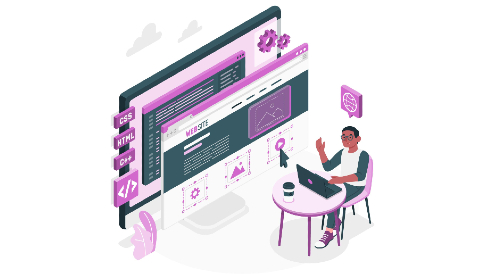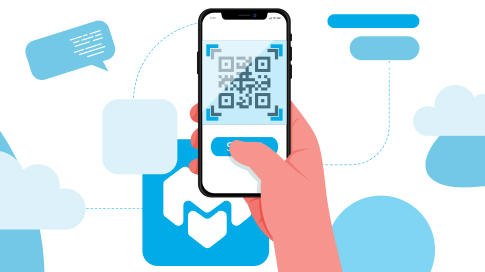Why Website Design Matters by Industry: Unleashing the Power of Effective Design
The digital landscape is rapidly evolving, and it’s a sin if your company can’t join the transformation. Businesses have recognized the significance of establishing an online presence to expand their reach and stay competitive. The advent of online commerce and remote work has further emphasized the importance of embracing digital platforms. It has enabled companies to connect with a broader audience and thrive in the ever-changing business landscape.
71 percent of businesses now have a website. This demand for websites has spurred the growth of code-free website builders. However, only a few manage to reach their desired conversion rates. Why is it so? One probable answer is website design. Let’s discuss it further.
The Role of Website Design in User Experience and Brand Perception
Your website’s design can significantly impact the user experience. Here’s why. Visitors won’t have a reason to stay if your site isn’t visually appealing. They will abandon your page and won’t hesitate to look at your competitors.
First Impressions Matter
A Pew Research Center survey found that 81 percent of customers conduct online research before finalizing a purchase. That’s why it’s vital to realize that your website is crucial as the initial introduction to your company and its products or services. Surprisingly, your website’s visual appeal and overall user experience significantly influence these crucial first impressions.
Design is paramount in creating first impressions, with most people citing it as an element creating an overall impact. While high-quality content is undeniably important, it loses its effectiveness when presented within a poorly designed framework. It’s safe to say that visual appeal and intuitive website navigation significantly influence people’s initial perceptions of your brand.
Why does it matter for your brand? Note that positive first impressions impact user satisfaction. The initial impression a user forms from your website can prime their perception of future interactions with your business. A visually appealing website is like priming your users to create a positive impression of your brand.
Aligning with Industry Expectations
Recognizing that each industry possesses distinct characteristics and user preferences allows you to tailor your design choices accordingly. In return, it helps foster trust, familiarity, and credibility. Consider the healthcare industry, where accessibility and professionalism are paramount. It’s common to see healthcare websites with user-friendly interfaces, clear typography, and intuitive navigation. These design aesthetics ensure visitors can easily find relevant information about medical services, doctors, and facilities. Healthcare websites can instill patient confidence and create a positive user experience by following these industry norms.
On the other hand, creative industries like design and fashion have more room for visually stunning and innovative designs. These industries thrive on creativity, uniqueness, and pushing boundaries. Design-driven websites have bold color palettes, unique layouts, and interactive elements that captivate visitors and showcase the artistic essence of the brand.
Website designs with industry norms show an understanding of your audience’s preferences and establish a sense of familiarity. This alignment creates a more seamless and intuitive user experience, as visitors will find it easier to navigate and engage with your website.
Maintaining Uniqueness
It’s important to note that aligning with industry expectations doesn’t mean conforming to a cookie-cutter template. Instead, it involves understanding your industry’s core values, aesthetics, and user expectations while infusing your unique brand identity. This way, you strike the perfect balance between meeting industry standards and differentiating yourself from competitors.
To achieve successful alignment with industry expectations, consider conducting thorough market research. Study successful websites within your industry and gather feedback from your target audience. It’s crucial to remain updated with the latest design trends and user preferences specific to your industry. This allows you to continually refine and improve your website’s design to ensure it effectively resonates with your audience.
Meeting user expectations is easier when you understand industry-specific design elements and incorporate them. It sets you apart from competitors, driving engagement, conversions, and long-term success.
Industry-Specific Examples of Effective Website Design
What industries have specific themes? Here are some of them.
E-commerce Industry
E-commerce website designs often incorporate specific features and elements that are not as prevalent in other industries. Here are some common design practices unique to e-commerce websites:
- Product showcase page: E-commerce websites prioritize showcasing products prominently. They often feature high-quality product images, multiple views, zoom functionality, and detailed product descriptions. Some use videos to highlight products. A Google study found that 50 percent of consumers believed online videos helped them decide to buy.
The screenshot is taken from Think with Google
- Shopping cart and checkout process: E-commerce websites have dedicated sections for the shopping cart and checkout process. These sections streamline the purchase journey, allowing users to add products to their cart, review their selections, enter shipping and payment details, and complete the transaction seamlessly.
- User reviews and ratings: They commonly display user-generated product reviews and ratings. These provide social proof and assist potential customers in evaluating the quality and suitability of products based on others’ experiences. A recent global study found that e-commerce websites witnessed a significant boost in conversion rates when they prominently showcased ratings and reviews.
- Product recommendations: They also leverage algorithms to provide personalized product recommendations based on user browsing and purchase history. These recommendations help customers discover related or complementary products, enhancing their shopping experience and potentially increasing sales.
- Promotions and discounts: E-commerce websites often prominently display ongoing promotions, vouchers, and limited-time offers to attract customers’ attention. They may use banners, pop-ups, or dedicated sections to showcase deals and encourage impulse purchases.
These design practices for e-commerce websites aim to create an optimized and intuitive shopping experience, enhance customer satisfaction, and drive conversions.
Legal Industry
Law firm website designs have their own set of distinctive elements that cater to the specific needs and expectations of the legal industry. Here are some standard design practices for law firm websites:
Law firm websites typically adopt a clean and reliable aesthetic. They often use a restrained color palette, high-quality images, and elegant typography to convey a sense of professionalism, credibility, and expertise. For instance, one survey found that it’s common for law firms to use blue as a prominent color for their logos.

The image is taken from 99Designs
They also prioritize straightforward and intuitive navigation to help visitors easily find the information they seek. Practice areas are prominently displayed, with dedicated sections for each area of law that the firm specializes in. This allows potential clients to identify the relevant legal services quickly. It’s also common for legal websites to prominently feature attorney profiles, highlighting their qualifications, expertise, and experience. These profiles help build trust and establish a personal connection with potential clients by showcasing the firm’s legal professionals and their unique strengths.
Law firms often include case studies or success stories demonstrating their track record of achieving favorable client outcomes. These real-life examples provide social proof and instill confidence in potential clients, showcasing the firm’s ability to handle complex legal matters effectively. It’s also worth noting that law firm websites must adhere to legal and ethical guidelines specific to the legal profession. They may include disclaimers, privacy policies, terms of service, and attorney advertising disclosures to comply with regulatory requirements. Furthermore, some law firm websites cater to a specific geographical area and incorporate localization elements. They may include the firm’s address, phone number, and local landmarks. Personalization can also be achieved by showcasing the firm’s involvement in the local community or highlighting relevant local legal insights.
Hospitality Industry
The hospitality industry relies heavily on visuals to entice guests. Websites incorporate high-quality images and videos to showcase the property, rooms, amenities, and surrounding attractions. These visuals create an immersive experience and give customers a glimpse of what they can experience during their stay. With the growing adoption of mobile devices for travel planning, hospitality websites must ensure responsive design and mobile optimization. Mobile-friendly websites adapt to different screen sizes, provide smooth browsing experiences, and enable easy booking on smartphones and tablets.
The ability to book rooms and accommodations directly on the website is critical for hospitality websites. Seamless and secure online booking systems simplify the reservation process, allowing guests to check availability, select dates, and make payments conveniently. Hospitality websites may offer localization features to cater to international guests. This includes providing language options, displaying local currencies, and presenting information specific to the target market. Hospitality websites may incorporate virtual tours or 360-degree views. These interactive features allow potential guests to explore rooms, facilities, and common areas virtually, creating a more immersive and engaging experience.
Use Industry-Specific Website Design for More Success
Industry-specific website design shapes the user experience, brand perception, conversion rates, and overall business success. When businesses understand their target audience, they can design websites that resonate with them. Remember that your design won’t matter if you can’t give it the guaranteed coverage it deserves. That’s why it’s crucial to partner with brands like Grey Smoke Media that can cater to industry-specific needs. The world of website design is evolving. Stay updated with the latest trends, user behavior, and technological advancements to ensure your website remains competitive and impactful within your industry.





Leave a Reply